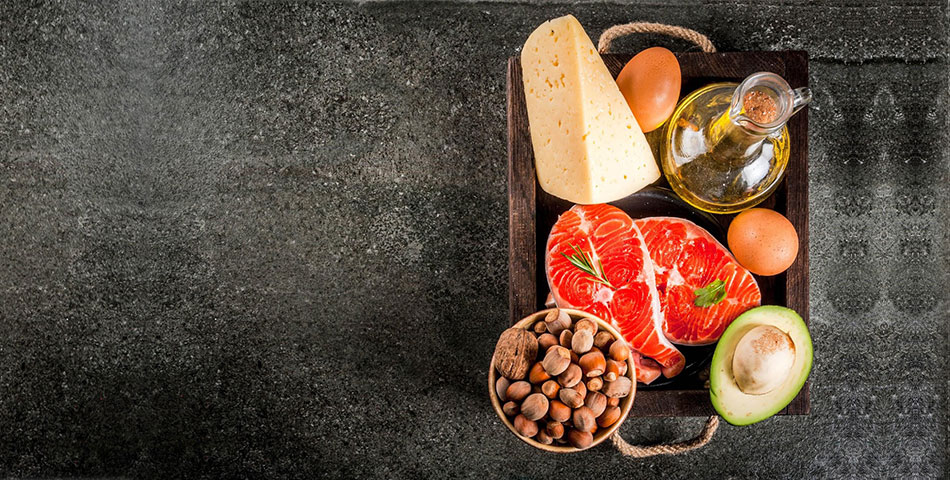On its own, CBD is amazing.
Yet things get even better when CBD is taken by a person whose body is primed to receive it.
Normally, this absorption rate is limited—CBD’s bioavailability is typically only around 20% or 30% at most, which means less than thirty percent of the CBD you ingest actually enters your bloodstream and gets fully absorbed. Nano CBD is one thankful exception to the 20-30% figure; its bioavailability can reach up to 90%
But it doesn’t have to be that way. That’s because CBD works through specific physiological pathways that can be aided and amplified by other substances. In other words, when CBD is used in conjunction with other natural substances, good things happen!
What follows is a list of five simple, science-backed biohacks that anyone can use to help their CBD go the extra mile. Some of them call for ingesting other plants and plant compounds; others describe more extensive lifestyle additions . . . and they all work well enough to be worth it.
Without further ado, here’s the list;
1. Eat mango

More specifically, eat a mango or two prior to taking your CBD. In addition to tasting wonderful, mangoes are high in a terpene (scent molecule) called myrcene.
This terpene also happens to be produced by the hemp plant, so it finds its way into many CBD oils. Myrcene is known to be calming and sedating; in cannabis, it’s partially responsible for the infamous ‘couch-lock’ effect. The terpene is anti-inflammatory and analgesic (pain-relieving) too. Many of these effects happen via myrcene’s activation of the brain’s specialized GABA receptors.
Myrcene may also increase the blood-brain barrier’s permeability. This natural barrier is very much a good thing; it protects the brain from harmful intruders. Yet the BBB can get in the way of cannabinoid absorption—especially the absorption of raw cannabinoids such as CBDa.
Myrcene’s bioavailability-boosting properties can be credited to its small size and low molecular weight. Research indicates that myrcene even speeds up the absorption of THC into the bloodstream; it’s likely the terpene would do the same for CBD.
One more thing: if you’re not a fan of mangoes, don’t worry. Myrcene is also found in hops, thyme, lemongrass, and cardamom. That’s just one more reason to incorporate herbs and spices into your diet!
2. Eat black pepper

This biohack may be less tasty than the mango/myrcene strategy, but what it lacks in flavor it more than makes up for in scientific backing.
Black pepper contains a number of potent plant chemicals, the major one involved here being something called piperine. Piperine has impressive health benefits of its own (it is anti-nausea and anti-inflammatory, among other things), but what’s really impressive is its effect on other plant substances.
Indeed, in recent years piperine has become well-known for its ability to boost the efficacy of cumin and curcumin products. What many people don’t know, however, is that it can do the same for a wide variety of plant compounds—including CBD.
Piperine may work by making the gut lining more permeable to cannabinoids, similar to how myrcene works to open the blood-brain barrier. In ancient Ayurvedic medicine, piperine is one of the three ‘acrids’ known to boost absorption of many other substances.
As this 2013 study more recently describes, “piperine [has been] found to increase the bioavailability of different drugs ranging from 30% to 200%. Subsequent research has shown that it increases curcumin bioavailability by almost ten-fold.”
Thankfully, piperine has a similar effect with CBD. A rodent study done at the world- renowned Hebrew University of Jerusalem discovered that “piperine enhanced the oral bioavailability of CBD in-vivo.”
Black pepper contains another important compound, a terpene called beta-caryophyllene. This terpene has recently begun to be recognized as a non-cannabis cannabinoid that strongly engages your body’s endocannabinoid system, a system known to regulate (among other things) sleep, mood, and your body’s response to chronic pain and stress.
And not just any part of the endocannabinoid system, but the very same CB2-receptors that cannabidiol engages. As you might expect, beta-caryophyllene carries with it many of CBD’s familiar health benefits: it’s anti-inflammatory, anti-swelling, and immunomodulating.
Still another ingredient in black pepper, guineensine, has been shown to help endocannabinoids function at their best.
For obvious reasons, those who are serious about ‘biohacking’ their endocannabinoid system with the absorption-boosters found in pepper may be better off taking it in capsule form. And more research is needed to determine the ideal amount and timing of black pepper intake. For now, using it liberally on foods definitely won’t hurt and might even help.
3. Add fish oil to your diet

We all know that fish contains an abundance of omega 3 fatty acids, which are beneficial for health.
Equally important, however, is the fact that fish doesn’t contain significant amounts of omega 6 fats.
This is important because the ratio of omega 6 to 3 in one’s diet plays a significant role in one’s health. An imbalance of too many omega 6’s causes increased inflammation and oxidative stress—and reduced endocannabinoid tone.
That’s because endocannabinoids (eCB’s for short) are actually made from these essential fatty acids! In fact, according to molecular biologist Dr. Bob Melamede, this may be the reason why omega 6’s and 3’s in the right ratios are so essential.
Sadly, however, the standard American diet (SAD) is way too high in omega 6’s. According to the Omega 6:3 study’s authors:
“…it has been established that the ideal ratio in the diet is of about 5:1 of ω-6:ω-3 PUFAs precursors. However, our modern diet is hugely unbalanced with an estimated average ratio of 20:1 [1]. The dietary deficit in ω-3 PUFAs has been associated with numerous diseases…”
And while this overabundance of omega 6’s may have the short-term effect of boosting endocannabinoid levels, it may also reduce the sensitivity of endocannabinoid receptors in the long run. For reasons that are both complex and biochemically-inclined, it’s a delicate balance. The bottom line, however, is that taking extra CBD within the context of a poor diet is inefficient. The CBD won’t be able to relay messages to its receptors as well as it normally would.
The solution? Eat more fish . . . and less canola oil. As the omega 6:3 study says, a diet rich in omega 3’s—and the natural endocannabinoids derived from it—“positively impacts synaptic plasticity.”
In other words, the endocannabinoid optimization that comes from eating well can make your brain more efficient, adaptable, and effective.
4. Get adquate sleep

We’re all aware that getting adequate sleep is a big deal. Sleep simply feels good . . . and conversely, being low in sleep doesn’t!
Thanks to recent advancements in endocannabinoid science, we now have another reason to sleep more: sleep directly impacts the health of the endocannabinoid system.
A 2016 study from the hard-to-pronounce Journal of Psychoneuroendocrinology found that short-term sleep deprivation had the short-term effect of boosting endocannabinoid levels, though long-term sleep deprivation had the opposite effect.
It’s as if the endocannabinoid system wants you to get adequate sleep, so it responds to the stress of sleep deprivation in hopes of encouraging improvement.
It follows that “listening to” the red flag raised by your endocannabinoid system and getting more sleep will lead to a healthier endocannabinoid system—one that responds better to CBD.
And this concept goes both ways. The endocannabinoid system regulates sleep stability and helps align one’s sleep cycles to the solar cycle. Anecdotally speaking, many people who use CBD report sleeping better and dreaming more; this study confirms a ‘flipside’ effect, that cannabinoids reduce PTSD-caused nightmares.
Keep in mind that these benefits relate back to CBD’s ability to improve endocannabinoid health. To really optimize things, consider supplemental cannabinoids (like those in CBD oil)—and reducing unnecessary sources of their demand.
5. Get a massage.

Many things that make one feel good also boost endocannabinoid levels. Exercise and its beloved runner’s high is one example.
As it turns out, massage therapy is another. A 2007 study, which looked at endocannabinoid expression within a type of connective tissue called fascia, found that massage therapy could induce “cannabimimetic,” or cannabinoid-replicating, changes in patients:
“Practitioners wield several tools that upregulate eCB activity, including bodywork, diet and lifestyle modifications, and pharmaceutical approaches. Many bodyworkers induce ‘’cannabimimetic’ changes in their patients, such as anxiolysis, easement of suffering, increased sense of wellbeing and even euphoria.”
It appears that researchers had noted similarities between the effects of bodywork and CBD and were inspired to investigate whether or not such bodywork really was boosting endocannabinoid levels. The answer: a resounding yes.
According to the same study, the mere act of stretching may serve to engage CB1 receptors in the fibroblasts of stretched muscles. More receptor engagement = more potential binding sites for CBD = potentially better results. Even acupuncture was found to stimulate the ECS, which means it could help CBD work even better.
The Endocannabinoid-Friendly Lifestyle
Overall, the endocannabinoid system is holistic and far-reaching, a dynamic web that touches nearly every aspect of health. So it only makes sense that this system would be best activated through an approach that’s equally multifaceted.
CBD is part of this ideal approach, to be sure . . . but definitely not all of it. CBD works best within a healthy lifestyle that nourishes the body in every way—not just with cannabinoids.
And when it does come time to take your cannabidiol, consider using the above biohacks to ensure that you get every milligram’s worth of plant goodness.
To Your Health
Green Maiden




